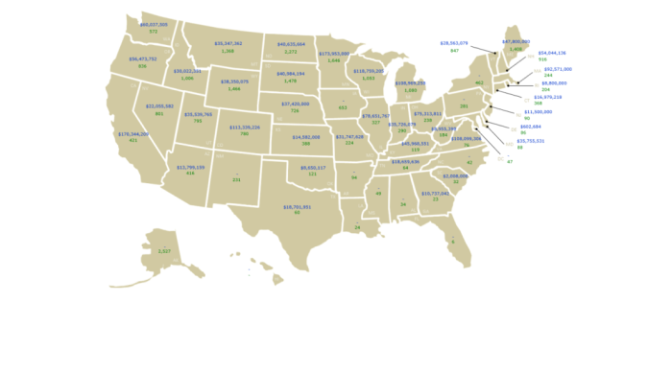Clear Roads has published the results of their ninth Annual Survey of State Winter Maintenance Data, which compiles winter resources, material and cost data from 41 states for the 2022-2023 winter season. The spreadsheet includes all submitted data, as well as calculated statistics, winter severity index data, and a United States map that displays many of these metrics. The spreadsheet also includes data from the previous seven surveys (winters 2014-2015 through 2021-2022) and displays averages and changes across winter periods.
Tag Archives: winter maintenance
New Podcast Episode of Talkin’ Winter Ops
Now in its seventh season, AASHTO’s Talkin’ Winter Ops podcast hits the ground running with an all new episode.
Continue reading New Podcast Episode of Talkin’ Winter OpsClear Roads: Winter Maintenance Research Roundup
Check out the recent research from transportation organizations around the country:
- Cooperative Automation Driving System (C-ADS) with Road Weather Management (RWM) with a Lane Closure, Federal Highway Administration, December 2023. Fact sheet.
- Field Test & Evaluation of a Solar Snow Fence, National Cooperative Highway Research Program, May 2023. Research report. (Editor’s Note: Solar snow fence is now being tested by MnDOT. Subscribe to the project for continued updates.)
- Snow Depth Retrieval with an Autonomous UAV-Mounted Software-Defined Radar, Colorado DOT, April 2023. Research report.
Clear Roads: Winter Maintenance Research in Progress
New research is underway! Learn more about some of the winter maintenance issues that Clear Roads and other transportation organizations around the country are exploring now:
- Automating Variable Speed Limits Using Weather, Traffic, and Friction Data, Aurora Pooled Fund. Anticipated completion date: January 2025. Project description.
- Developing a Collision Warning and Collision Avoidance System for WYDOT Snowplows, Wyoming DOT. Anticipated completion date: April 2024. Project proposal.
- Development of a Public Service Announcement Library, Clear Roads Pooled Fund. Anticipated completion date: March 2025. Project description.
- pH Waiver for Deicing Products and the Qualified Products List, Clear Roads Pooled Fund. Anticipated completion date: April 2025. Project description.
Clear Roads is a multi-state winter maintenance research initiative. The original article was published by Clear Roads on their website, January 4, 2024.
New Talkin’ Winter Ops Podcasts
The Talkin Winter Ops podcast is an opportunity to listen in on thought-provoking conversations with experts and practitioners who have walked the walk. Devoted to all things winter maintenance and road-weather related, guests and topics range from practical to academic, tactical to strategic, and the folks who get the job done. Here are some recent podcasts you might be interested in.
Continue reading New Talkin’ Winter Ops PodcastsEvaluating New Slurry and Plow Equipment
MnDOT maintenance practitioners and managers are always looking for new and better ways to handle winter weather. A recent evaluation of new products revealed which of several new pieces of high-potential winter maintenance equipment were appropriate for use on Minnesota highways. Just as importantly, the agency uncovered the shortcomings of other equipment, identifying critical issues to address before acquiring additional equipment.
Continue reading Evaluating New Slurry and Plow EquipmentClear Roads Now Solicits Research Ideas Year-Round
Do you have a winter maintenance problem that you think research can solve? Anyone in the winter maintenance community can submit their idea and have it considered by the Clear Roads Technical Advisory Committee (TAC). Submit your research idea before December 31st and it could become a Clear Roads research project during the following year’s research cycle.
Clear Roads funds research that addresses six winter maintenance initiatives: planning, equipment, materials, training, technology, and safety. The ideas and problem statements that best meet Clear Roads’ priorities will be developed into full-scale research solicitations (RFPs) and posted by MnDOT for competitive bid.
To learn more about Clear Roads research opportunities, please sign up to receive Clear Roads email updates. For a list of research ideas considered in past years, see the All Proposed Projects page.
Designing Pedestrian Safety Features for Year-Round Maintenance
Pedestrian safety countermeasures near roadways require year-round maintenance to be effective. Clearing snow and ice has not generally been a design consideration for safety treatments, but new research has identified specific design criteria to help MnDOT and other agencies keep walkways clear without impeding maintenance efforts.
Continue reading Designing Pedestrian Safety Features for Year-Round MaintenanceSICOP Talks Winter Ops
Episode 89: It’s about the speed
What actually happens when you apply salt to a road during a winter event? In this episode of AASHTO’s Talk Winter Ops podcast inorganic chemist, Dr. Scott Koefod, talks about the chemistry of salt. They discuss which salt solutions, and snow and ice activities can make the biggest impacts.
Podcast posted August 8, 2023
Clear Roads Selects 2023 Research Projects
The Clear Roads Technical Advisory Committee reviewed new research proposals and selected 8 projects to fund. The projects are:
- Development of a Public Service Announcement Library
- Quantifying the Economic Value of Snow and Ice Operational Success
- Update to CR 14-02: Quantifying the Impact that New Capital Projects will have on Roadway Snow and Ice Control Operations
- Solar Radiation Benefits / Chloride Reduction Potential Associated with the Use of Vegetation Management Practices Near Roads
- Computer-based Training for the Clear Roads ELDT Modules
- Synthesis: Management of Video Recordings and Images taken from Truck-mounted Cameras
- Synthesis: Brine-making Practices
- Synthesis: UAV Uses for Winter Maintenance
More information about these projects is available in the 2023 All Proposed Projects summary. Requests for investigator proposals for the new projects will be posted this summer. Go to the Clear Roads website for more information.









